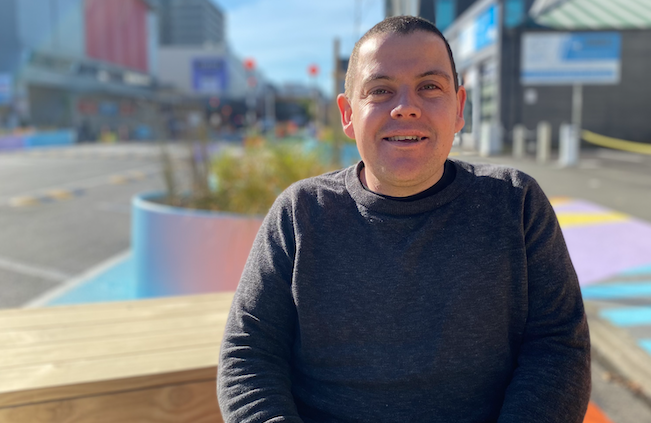Innovating Streets - It’s about recognising human diversity and designing for everyone’s needs


Hamilton Kirikiriroa Innovating Streets is an open invitation to embrace a kind of change that benefits, not just the arts, but the entire community, allowing us to see into a future that’s hopeful, considerate, collaborative, and filled with opportunity.
Here are some thoughts from Maurice Flynn, Access Coordinator at CCS Disability Action Waikato. Maurice was part of Hamilton City Council’s Innovating Streets project group from the get-go.
I believe the Innovating Streets project has been a great opportunity for our city. We have been able to trial what prioritising people friendly environments can look like, and what positive impact this can have within our community.
Innovating Streets – the development of Rostrevor and Ward St – is a trial funded mostly by Waka Kotahi – NZ Transport Agency, to support streets to be safer and easier to move around. This project is cheaply trying out a future possibility for our CBD, so we can all see the potential, and tweak as necessary – so we don’t have another costly street that doesn’t work for everyone. There are many examples of poorly designed infrastructure around our city where diverse communities have not had a voice, and in return we get environments that don’t suit people’s access needs, cost time and money to fix, and literally exclude people, with a real potential of injury or death.
The disabled community was a part of this project from day one. We collaborated with our biking community, students from surrounding schools, the business owner’s association and others representing many other communities within our city. Our voices were all heard and listened to. Ward and Rostrevor Streets are currently more people prioritised which means it is easier for everyone – in particular our disabled community – to get around. More importantly, it’s about universal design. Someone with additional mobility requirements, such as a wheelchair user, experiences the same hazards when using a poorly designed street as a parent with small children or a pushchair – it’s about recognising human diversity and designing for everyone’s needs.
When the disabled community is not thought about in the design, we are inconvenienced by environments that do not include us. We have to take longer routes to where we need to go, risking our own safety because of poor design of our roads and crossings.
I do agree the design isn’t perfect, it hasn’t solved the difficulty of crossing Tristram St. Even imperfect, Ward Street under the trial design is a hell of a lot better for people than what it was before. The process on this project was a lot better than previous for two reasons: it was inclusive, and we were able to trial things. Small things have been changed over time of the trial, for example, the mobility parking spaces on Ward St were relocated after feedback was given. It’s important to give feedback, because our council does listen.
People need to be real about what they are complaining about. There’s by far the most noise from people who dislike the trial because either they now have to manoeuvre their car and pay more attention to what and who is around them, or they may have to walk 1-2 minutes from a nearby carpark. The inconvenience of this is not comparable to the genuinely life-affecting barriers that disabled people face every day. If you are angry about now having to walk from one of the 2100 carparks within 5 minutes’ walk of Ward St, you may need to re-look at your priorities. Threatening small businesses with taking your custom elsewhere because you now have to walk for a couple of minutes doesn’t really mean you were ever a ‘loyal’ customer.
Ward Street is now a safe place to walk and cross, and it’s now possible to bike and scoot safely off the footpath. Te Ruru Light Festival Pop up that was held recently on the developed Rostrevor Street was a perfect example of what that space could be used for going forward. The negative feedback has made it clear to me that a large majority of our community does not like change, however change is what our disabled community rely on to have equal opportunity of participation in the communities that we belong to. I think it is about time we do things differently and reprioritise how we do design within our diverse city.